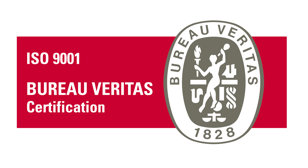Article

Does the qualification of a mark as a position mark or figurative mark have an impact on the proof of genuine use?
A position mark? A figurative mark?
A position mark is one of so-called “non-traditional marks”, a mark consisting of the specific way in which it is placed or affixed to the product.
Position marks are very often used to have protection in the fashion sector, for example to have protection:
- For elements of decorations of shoes:
|
|
N° 017901400
|
N° 018033368
|
- For decorations of clothes:
|
N° 018021972
|
N° 018021831
|
N° 018015719
|
- For decorations of eyeglasses frames:
|
N° 018017536
|
N° 018017541
|
N°018072082
|
Since the transposition of Directive (EU) 2015/2436 into the EU Trademark Regulations, they can be filed as position marks.
These marks were previously registered most often as figurative marks consisting of figurative elements, original stylization or colours.
Nevertheless, the EUIPO Examination Guidelines had recommended to specify in the description that the mark was in fact a position mark and to represent the mark in solid lines while the broken or dotted lines would be used for indicating the position of the mark on the product being excluded from protection.
A difficulty could therefore arise when it was necessary to prove use of a position mark: the elements of the marks registered as figurative marks but used as a position mark and whose protection was not claimed, should they be taken into consideration?
This question was recently put to the Court of Justice of the European Union on 6 June 2019 (C-223 / 18P Deichmann SE / EUIPO - Munich SL).
Backgrounds of the current case and the judgement
The company MUNICH SL filed on 6 November, 2002 the EU mark n ° 2923852 reproduced below, for sports footwear:

This mark had been filed as a “figurative mark”, without any mention in the description of the mark to clarify the actual nature of the mark, contrary to the requirements of the Examination Guideline in force at the time of the filing. In respect of graphic representation of the mark, two types of graphic design had been used, that is to say the broken or dotted lines, which represent the appearance of the product covered by that mark, and two solid lines, representing an affixed cross.
MUNICH SL brought infringement proceedings based on the said registered EU “figurative mark” against a company Deichmann which was selling sports shoes with a large cross on their side.
Deichmann contested the validity of this registered figurative mark of more than five years old by alleging that the figurative mark has not been put to genuine use. The dispute focused on the admissibility of the provided evidence ; the appellant, Deichmann challenged the admissibility of the evidence considering that the evidence proved the use for a position mark while the mark had been filed as a figurative mark. According to Deichmann, the broken or dotted lines are an integral part of the mark in question and the mark cannot be considered as anything other than a figurative mark.
The answer to this question was of crucial importance: should the mark be used for the whole of the sign filed if the qualification of figurative mark indicated in the application was retained or for the element indicating its position on the product if the use of the mark as a position mark was taken into consideration?
At the request of the court which stayed the proceedings as to the validity of the mark in question, the issue was brought before the EUIPO. In the case in reference, the Board of Appeal of the EUIPO considered that the type of mark indicated at the time of filing does not necessarily imply that the use of that mark is necessarily appraised in relation to the type of mark indicated.
The EUIPO thus considered that the broken or dotted lines in the representation of mark should not be taken into consideration in providing evidence of use of the mark, even if that mark had been filed as a figurative mark in so far as there was nothing to exclude the claimed protection from the single cross in solid lines.
This analysis was confirmed by the General Court and then by the Court of Justice of the European Union (CJEU); “… the General Court in essence relied on the graphic representation of the mark at issue, regardless of its classification, for the purpose of assessing whether there is genuine use of it, when it noted, … that the protection sought only referred to a cross consisting of two black intersecting lines, represented in solid lines and that the dotted lines forming the outline of the sports shoe and its laces, were only intended to make it easier to delimit the position of the graphic design on the side of the sports shoe” (para. 41). What is important as regards the determination of the subject-matter of the mark is that “the graphic representation of a mark must be clear, precise, self-contained, easily accessible, intelligible, durable and objective” (para. 44). “… the fact that the mark at issue has been registered as a figurative mark is not relevant here for the purpose of determining the scope of the application for protection” (para. 47).
Our Comments / What to consider from this decision?
At the time of the filing of the mark in question (in 2002), the EUIPO Examination Guidelines required that a position mark is expressly described as such. However, in the judgement the CJEU pointed out that “they are not binding legal acts for the purpose of interpreting provisions of EU law” (para.49)
The CJEU rejected the appeal and upheld the views of the General Court that the classification of the mark as a figurative mark rather than position mark was irrelevant in assessing the genuine use. The Courts inferred directly from the graphic representation of the mark, with sufficient precision, that protection was sought only for a cross, consisting of two black intersecting lines, which were represented in solid lines.
It is important to note, however, that a filing made in accordance with the Examination Guidelines at the time would have included a description of the mark indicating that it was a position mark, and this would have probably avoided this dispute about the admissibility of the proof of use.
It should be noted that since 1 October 2017, the Commission Implementing Regulation (EU) 2017/1431 requests that a position mark “shall be represented by submitting a reproduction which appropriately identifies the position of the mark and its size or proportion with respect to the relevant goods. The elements which do not form part of the subject-matter of the registration shall be visually disclaimed preferably by broken or dotted lines. The representation may be accompanied by a description detailing how the sign is affixed on the goods”.
The question put to the Court in this case, which concerned the admissibility of the use of a figurative mark as a position mark, allows it to show some flexibility and pragmatism in the context of the classification of the mark. Will this be so when, with the increase in filings of new types of marks (position marks, sound marks, multimedia marks ...)? Will it be necessary to settle conflicts between marks in different categories?
The experts of Plasseraud IP Trademarks & Designs are at your disposal to seek with you the best qualification for the signs that you intend to protect as a trademark, in France and before the EUIPO and to take appropriate steps.


































